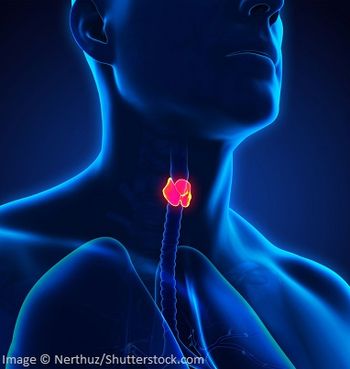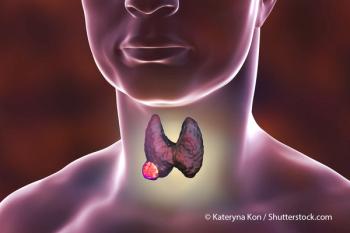
RAS Mutation Presence in Thyroid Nodules Carried Risk for Cancer
Preoperative testing of thyroid nodules for RAS mutations showed that nodules that tested positive for HRAS and NRAS were associated with a substantial risk for cancer.
Preoperative testing of thyroid nodules for RAS mutations showed that nodules that tested positive for HRAS and NRAS were associated with a substantial risk for cancer, according to the results of a study
Although thyroid nodules can be detected in as many as one-half of healthy adults aged older than 60 years, only a small percentage are malignant. Preoperative RAS testing of thyroid samples with indeterminate fine-needle aspiration biopsy results has been controversial because RAS mutations are also found in benign adenomas.
“In the present series, preoperative detection of any RAS mutation with indeterminate cytology was associated with a high risk of histologic cancer, which is equivalent to the risk of cancer associated with a suspicious for malignancy cytology result,” wrote Snehal G. Patel, MD, of University of Pittsburgh, and colleagues. “The risk of cancer remains high even if RAS is detected at a low level.”
For this study, the researchers took fine-needle aspiration samples from 2,590 patients with nodules that were classified into one of three indeterminate cytology categories. The samples then underwent prospective next-generation sequencing assay testing for NRAS, HRAS, or KRAS mutations.
During the study, 93 patients (94 nodules) were classified as being RAS-positive (3.6%). The RAS mutation was identified at a low allelic frequency of less than 10% in about one-fourth of nodules and at a high allelic frequency in the remaining nodules. The most commonly identified mutation was NRAS, which occurred in 49% of positive samples. HRAS mutations were found in 30% of nodules and KRAS in 21%.
Of the patients with RAS-positive nodules, 86 underwent surgery, and 76% of the nodules were malignant. Rates of malignancy were similar in all three of the indeterminate cytology categories. Follicular variant papillary thyroid cancer (FVPTC) was the most common cancer type (83%).
HRAS mutations had the greatest risk for cancer (92%), followed by NRAS (74%) and KRAS (64%; P = .05).
“Histologic malignancies associated with preoperative RAS usually are encapsulated FVPTC without central compartment lymph node involvement or extrathyroidal extension (74%), but can also be classic or poor-prognosis papillary thyroid carcinoma,” the researchers wrote. “The majority (60%) of patients with RAS-positive unifocal nodules on preoperative imaging may be adequately treated by initial lobectomy.”
The researchers conducted an analysis to see if they could identify preoperative risk factors associated with benign or malignant RAS-positive nodules; however, they found no other preoperative factors associated with malignancy.
Newsletter
Stay up to date on recent advances in the multidisciplinary approach to cancer.















































































